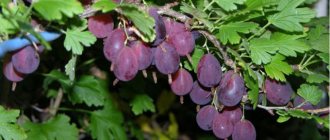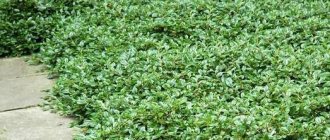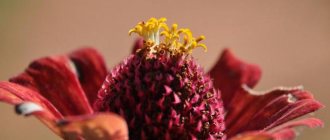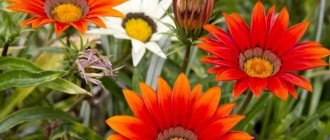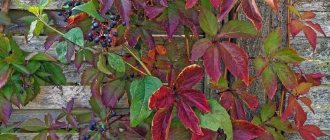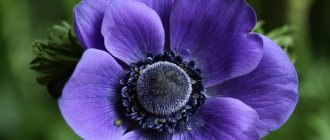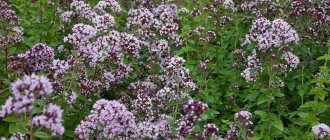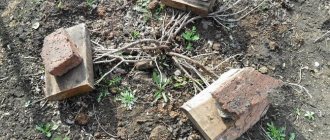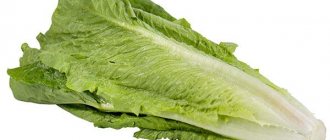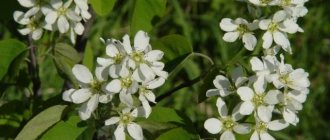Description, advantages and features
Thuja foldata is common in ornamental gardening. In such conditions, trees do not reach large sizes; their maximum is 16 meters. The advantage of urban thuja lies in its dense and dense crown in the shape of a pyramid. The branches of the tree are located horizontally, and the needles are flat. The color is bright green, the underside of the leaves is decorated with light stripes. The trunk has a brownish-red, brownish tint, the bark structure is covered with cracks. The fruit of the thuja is cones that have an oblong-oval shape, their length is from 10 to 12 cm.
The use of thuja Forever Goldie in landscape design
Thuja Forever Goldie is widely used in landscape design. Together with oriental spruce, hemlock and other types of coniferous trees of the Cypress family, they make up compositions in the garden plot. Forever Goldie tolerates urban conditions well, so it is often used in the design of parks and squares.
To ensure that the thuja fits harmoniously into the composition, trim it to the desired shape.
Forever Goldie is also used as a hedge. This variety was bred specifically for yellow hedges.
Important! Creating a full-fledged hedge will take a long period of time. This is due to the fact that thuja takes a very long time to grow.
Reproduction of thuja foldata
The process occurs in two ways: vegetative (cuttings) and seed.
You can grow a huge number of plants. Planting material is easy to obtain yourself. So, at the end of summer, thuja seeds are collected, which are then planted in a garden bed and covered with film for the winter.
The vegetative method is propagation by cuttings, which are harvested in June. The cuttings are broken off from the branch so that a “heel” (five branches) remains on them. They are immediately planted in the ground next to a large tree. The soil for cuttings is dug up and fertilizers (peat) are added to it. The top of the soil is covered with sand.
Before planting, the cuttings are treated with Epin solution. After planting, the cuttings are covered with a bottle.
Further care
Shrub care will consist of:
- regular watering;
- loosening the soil and removing weeds after watering;
- periodic application of fertilizers;
- sanitary pruning;
- treating wood against pests and diseases;
- preparing the plant for wintering if necessary.
Did you know? In its natural environment, thuja provides nesting sites and shelter for small birds and animals. Its buds, seeds and twigs
—
excellent power source for them.
Watering and fertilizing
Thuja does not require special attention. But watering should be carried out once every 3–5 days, since Vipcord is extremely sensitive to drying out of the soil, so irrigation is organized as the soil dries to a depth of 5–7 cm. After the end of the growing season in winter, thuja need not be watered. If it rains, then additional watering is also not needed.
Fertilizers are applied in early spring. It is advisable to place 5 kg of compost under each plant. But if you don’t have it, replace it with a purchased balanced fertilizer. If your Vipcord looks green, is growing well and generally looks prosperous, then there is no need to fertilize so as not to overfeed the thuja.
Loosening and mulching the soil
If necessary, place a layer of mulch in the root zone to protect the roots from drying out, freezing or overheating, and to suppress weeds. These can be pine needles, sawdust, chopped straw.
Its thickness should be 5–15 cm. But it should be laid at a distance of at least 6 cm from the trunk, otherwise wet mulch will contribute to the rotting of the plant.
Trimming
Thuja does not forgive incorrect haircuts, so do not trim the bush unless necessary. If there are dry branches, they are pruned at a time when the plant is in a dormant period, i.e. in winter. Before pruning, the tool must be disinfected so as not to transfer microorganisms from one tree to another.
Important! All types of thuja have one thing in common: they do not form new buds on an old tree. This means that if a branch looks bare or dry, it definitely needs to be cut off.
Shelter for the winter
Thuja tolerates frost well, so in regions with mild winters there is no need for special shelter. But if your frosts drop below -20°C, then Vipcord can be covered with several layers of burlap or spunbond for the period of frost.
Please note a number of features. If the weather is warm, the air temperature under the film covering will be higher than outside. At night, the air will cool, forming condensation. As a result, mold appears, which is harmful to the plant, so shelter is only needed when it is frosty. Do not store it at above-zero temperatures.
Growing decorative thuja at home is quite possible. This is a very unpretentious plant, easy to maintain and unpretentious to the climate. In addition, Vipcord does not take up much space, so if desired, it can be planted on the site.
Landing
The giant thuja is not particularly resistant to frost. It grows in central Russia and often freezes. In general, this species is unpretentious, but there are a few things you should know before planting.
To plant Folded Thuja, you need to remember that the area for such a tree should be sunny, but not all day long. Exposure to direct rays for a long time can dehydrate the tree, which will lead to poor wintering. Also, do not forget that this plant does not tolerate drafts well! Gardeners advise choosing a planting location where the soil is most nutritious: turf soil with peat is perfect.
Planting occurs in spring or autumn; it is best to choose a place in the shade, protected from the wind. The hole is dug to a depth of 70-80 cm. If seedlings are planted in groups, then the following distances should be maintained between them: for a hedge - at least 50 cm, for an alley - from 3 to 5 m.
Do you like Thuja plica?
Yes
No
If the soil is clay, then at the bottom you need to make drainage from crushed stone, pebbles or expanded clay. If thuja is planted in an area where the soil is poor, then the soil must be enriched with peat or humus.
A seedling is lowered into the hole and covered with earth, but the root collar must be above the ground level
When planting, it is important to maintain the integrity of the tree’s earthen coma. After planting, the tree is watered abundantly.
Pests and diseases that Thuja Vipcord suffers from
Diseases – these should also be discussed. After all, it’s no secret that a disease that can be very dangerous for thuja is late blight . It is a fungal infection that can invade the plant's system. Which leads to his slow but inevitable death.
The disease is not at all easy to cure. After all, sometimes bushes cannot be treated. Therefore, the only way out is to dig up the bush and burn it, and disinfect the soil at the site of its planting. This procedure is sometimes repeated several times to accurately get rid of the fungus.
To prevent the disease, it is necessary to thoroughly loosen the soil in which the thuja will grow and mulch it. We have listed the products that can be used as mulch a little higher.
Thuja can also develop a disease such as rust. At the same time, it loses its decorative properties. Since both the shoots and the needles themselves become brown and do not look attractive. You can clean off the plaque yourself by hand. Or the affected areas can be removed, and the plant is treated with special substances - fungicides.
Fungicides can be purchased at any store. They come in various types. And the gardener can choose those fungicides that are most suitable for treating coniferous crops.
Insects can also attack thujas. In order to get rid of entire colonies, you can use a universal drug called Karbofos. It is especially necessary to pay attention to such a pest as the cockchafer . Since he is the one who doesn’t mind feasting on thuja and its needles. And the larvae of the cockchafer are very predisposed to eating the succulent roots of the thuja.
In order to get rid of the pest, it is necessary to treat the plant and root circle with Bordeaux mixture.
What kind of care does thuja foldata require?
To care for and maintain health, you must follow the following rules:
- Watering. Frequency depends on soil type. If it is too moist, then watering should be skipped, but in the summer the soil should not be allowed to dry out. Gardeners recommend watering at least once every 10 days. This scheme is optimal for an adult plant.
- Important One tree requires at least 10 liters of water!
- Weeds should be removed around the thuja. Its territory must be clean, since weeds have a detrimental effect on the growth of the tree, especially if it is young.
- We must not forget about bait. It is recommended to fertilize thuja in the spring with mixtures containing nitrogen, in the summer with phosphorus, and in the fall with potassium.
- The root circle is mulched with spruce branches, dry leaves or peat. This reduces the evaporation of moisture from the soil and prevents the growth of weeds.
- Caring for thuja includes pruning dry and damaged branches. They should be removed in March-April. To shape the crown, choose mid-summer, when the shoots stop growing.
- Before winter, young plants are covered to protect them from the cold. The crown of the trees is tied with a rope, and fabric is pulled over the thuja.
Features of growing ephedra
The requirements for planting thuja are similar to the rules for rooting other types of conifers. The plant prefers turf or leaf soil, mixed with peat and sand in a volume of 2:1:1. It is advisable to immediately fertilize the tree with mineral products. An adult plant requires 0.5 kilograms of nitroammophoska.
In nature, it can grow on almost any soil, including swampy, peaty, and also, subject to drainage, clayey terrain and dry sandy loam.
Plants are planted at a distance of 0.5 to 5 meters. When forming alleys, you need to arrange conifers about 6 meters wide, 4 meters between trees. The requirements for the depth of shrinkage of cuttings are 60–80 centimeters, which depends on the type of soil, the need for drainage, as well as the volume of the earthen ball with the roots of the seedling.
The place where the trunk is attached to the roots should be located at the level of the soil. A drainage layer of approximately 15 centimeters is required if the soil is clayey.
Plant care
During the first month after planting the plant, the cuttings need to be abundantly watered in a volume of 10 liters per bush once a week. In arid climates, the tree needs to be watered twice as often with twice the volume of liquid.
Sprinkling of the conifers is also carried out. A few years after planting the cuttings, the application of Kemira Universal fertilizer is required in a ratio of 120 grams per cubic meter.
After rooting the seedling and its adaptation to the substrate, the conditions of thuja foldosa require minimal care. At the same time, it is important to immediately correctly determine the place to plant the tree. A well-lit or shaded area would be optimal. With a lack of light, the plant thins out, the branches become less spreading and dense.
At the same time, in the scorching sun, the plant may suffer from a lack of liquid and temperature changes. It is better to plant in areas protected from wind or construct windproof structures for cuttings.
Thuja provides a superficial root, so the soil is loosened by approximately 7 centimeters so as not to damage the roots. It is advisable to mulch the substrate with peat, laying a layer of approximately 7 centimeters.
Pruning branches
The tree requires the removal of dried branches; sanitary pruning is carried out in the spring. The formation of a bush is carried out by cutting no more than a third of the length of the branches.
The crown is formed as needed, but cutting branches too often is not recommended. Thuja has good frost resistance, but during the first winter after planting the seedling, it must be protected from the cold, as well as from sunburn.
The most popular varieties of thuja
Atrovirens
It grows in moist, damp, shady and even swampy soil. Most often these are slightly acidic forest slopes or river banks. This variety prefers humid regions where there is often heavy rainfall; without hot summers and moderate winters. Thuja Atrovirens is a columnar-shaped coniferous plant. It is densely dotted with shoots and branches that are located vertically. The cone at the apex persists even into adulthood. Atrovirens reaches a height of 15 meters, and its diameter is 3-5 meters. The growth per year is 30 cm, and the width is 10 cm.
Vipcord
This is a very unusual variety of folded thuja. The variety is classified as decorative, hence the small size of the tree - about half a meter. This variety is used mainly for landscape design: creating curbs, rock gardens, mixborders and container compositions. Whipcord shoots are very similar to ropes, and the ends are pointed, the color is dark green, shiny, and in winter it takes on a bronze tint. Thuja grows 10 cm per year.
Gelderland
This is a variety with miniature folded chameleon needles. The diameter of the crown by the age of 10 reaches up to 2.1 - 2.5 m. The height of an adult plant is 4 - 4.5 m. The annual growth is 10 - 20 cm. The crown resembles a cone. In summer, Gelderland is bright green, and in winter it takes on a bright yellow hue. This variety of thuja is unpretentious; it can be grown in any soil, in the sun or in the shade. In hot summers, the foliage does not fade, and in winter it can withstand frost well.
Gelderland is easier to propagate by seeds than by cuttings.
Zebrina Extra Gold
One of the most popular varieties of thuja. The leaves are golden in color, columnar in shape, and the needles are large. The tree grows very quickly - in 10 years it grows 1.5 meters in length and 5 meters in diameter. Maximum height is 12-15 meters. In summer, green dots appear on the golden needles. The soil for thuja is chosen to be fertile and the place to be sunny. This species is often planted in parks or front gardens.
Cancan
A plant with an evergreen lush crown. It is formed with the help of a large number of branches from shoots on one parallel. In nature, this folded thuja grows up to 60 meters.
In a decorative environment, the maximum height can reach 15 meters. Lush needles and a dense crown are the main differences between thuja Kankan. Gradually, leaves are layered on the crown, and a shine appears on the front surface. White stripes are visible on the inside. It is suitable for a park, garden or alley. But this variety of thuja does not tolerate the climate in Russia.
Kornik
Powerful coniferous tree with a dense pyramidal crown. The Kornik variety feels good in the shade, but requires high humidity in the soil and air. Hence the poor tolerance to drought, but thuja can withstand winter and frost. The root grows slowly, so it has a decorative shape all year round. This thuja goes well with cypress, hemlock, and fir. Suitable for parks, alleys, for creating contrasting compositions. Used in landscape design.
Martin
Decorative coniferous tree. The growth of such a thuja reaches a height of 1.5 meters. Its shoots are branched into several trunks parallel to the main one. They have a flat shape and are raised upward, externally forming plates. Old shoots are brownish in color, while young shoots are bright green. The needles are scale-like and fit tightly together. Every year, spherical cones are formed on this thuja, with a brown-brown color, their length reaches a maximum of 2 cm. The seeds are brown, oblong.
Forever Goldie
A small tree shaped like a cone. It reaches a height of 2.5 m and a diameter of 1.5 m. This thuja is dense, the shoots are directed upward, they have a golden yellow hue, and practically do not change color in the autumn.
Forever Goldie does not require pruning. A sunny place is suitable for this thuja, as its color is more saturated in sunlight.
Excelz
An evergreen tree that has the shape of a column. Excels is unpretentious in cultivation, so the most necessary thing for it is high soil and air humidity. The trunk of this thuja goes up, it is horizontally raised, arched, the branches are located vertically.
Thuja Excels is considered one of the fastest growing: annual growth is 30 cm in height and 10 cm in width. An adult plant reaches 12-15 meters, and can be up to 3-5 meters wide.
There are quite a lot of varieties and types of thuja. There are both ornamental trees for gardens and parks, as well as small trees for planting on a summer cottage. The main thing is to follow proper care, then the plant will decorate any garden.
Thuya Kankan - photo
Judging by numerous reviews, thuja foldata Kankan is a valuable representative of this type of coniferous plant, which is ideal for any landscape design. This evergreen tree has a spectacular appearance and does not lose its decorative effect throughout the year. It is enough to plant correctly and regularly care for the young plant and it will thank you with rapid growth and a lush crown.
